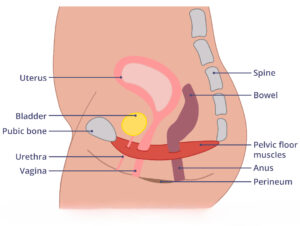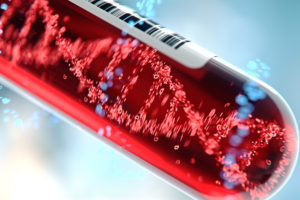What are Pelvic Floor Exercises?
Pelvic Floor Exercises Overview
Exercises to strengthen pelvic floor muscles include Kegel exercises, bridges, squats, and more. Pelvic floor exercises may help to improve pelvic floor weakness and enhance bowel and bladder control.
The pelvic floor is a set of muscles that supports pelvic organs, such as the bladder and bowel. These muscles aid urinary control, continence, and sexual function.
Anyone can experience pelvic floor weakness, and exercises can help strengthen the pelvic floor, enhancing bowel and bladder control.
Doing pelvic floor exercises can also have other benefits, including:
- Helping with recovery after childbirth
- Reducing the risk of vaginal prolapse
- Speeding recovery after prostate surgery
- Reducing the risk of rectal prolapse
However, anyone who has recently had surgery or given birth should talk to their healthcare provider before starting any pelvic floor exercises to ensure that it is safe.

Types of Pelvic Floor Exercises
Following are some of the different types of pelvic floor exercises.
Kegels
Kegel exercises focus on tightening and holding the muscles that control urine flow.
To perform this exercise, a person should:
- Sit in a comfortable position, close the eyes, and visualize the muscles that can stop urine flow.
- Tighten these muscles as much as possible.
- Hold this position for 3 to 5 seconds. It should feel as though the muscles are lifting up as a result of the squeezing.
- Release the muscles and rest for several seconds.
- Repeat this up to 10 times.
Individuals can vary this exercise by doing it while standing, lying down, or crouching on all fours.
Squeeze and Release
This rapid movement helps the pelvic floor muscles respond quickly.
To perform this exercise, a person should:
- Sit in a comfortable position.
- Picture the pelvic floor muscles.
- Squeeze them as quickly as possible and release them without trying to hold the contraction.
- Rest for 3–5 seconds.
- Repeat this 10–20 times per set.
- Do two sets later in the day.
Bridge
While the bridge exercise primarily strengthens the buttocks, it also helps work the pelvic floor.
To do this exercise:
- Lie on the back and bend the knees, with the feet flat on the floor about hip-width apart. Keep the arms by the sides with the palms facing down.
- Contract the buttocks and pelvic floor muscles, and lift the buttocks several inches off the ground.
- Hold this position for 3–8 seconds.
- Relax the buttocks and pelvic floor muscles, and lower the buttocks to the ground.
- Repeat this up to 10 times per set.
- Rest, then perform up to two additional sets.
As the strength of the pelvic floor increases, many people find that they can do more repetitions.
Squats
Some research suggests that squats can help strengthen the pelvic floor and buttocks in children. A person should only start doing squats for this purpose, however, after becoming comfortable doing Kegels in a stationary or bridge position.
To perform a squat, a person should:
- Stand with the feet hip-width apart, keeping them flat on the floor.
- Bend at the knees to bring the buttocks toward the floor, going only as low as is comfortable.
- Keep the back straight and tilted slightly forward. The knees should be in line with the toes.
- Focus on tightening the buttocks and pelvic floor while returning to a standing position.
- Repeat this exercise, doing up to 10 repetitions per set.
- Rest before performing any additional sets.
Not all squats target the pelvic floor, however. Wide-legged or deep squats may make it difficult to retain a pelvic floor contraction. When strengthening the pelvic floor, narrow and shallow squats tend to be more beneficial.
Troubleshooting
People may have difficulty isolating their pelvic floor muscles to perform the exercises. Specialized physical therapists can help, using different feedback devices.
One example is a biofeedback device. Using it involves the physical therapist placing sticky electrodes on specific areas of the body and asking the person to try contracting their pelvic floor muscles. The electrodes send signals to a computer, and the therapist can tell when the person is contracting the right muscles.
Sometimes, nerve damage can prevent a person from contracting their pelvic floor muscles on their own.
In this case, a specialized physical therapist may offer pelvic stimulation therapy, which can help the person produce the right muscle contractions.
Exercises to Avoid
Some exercises may be too difficult for a person with a very weak pelvic floor. Performing the exercises may weaken the muscles more and lead to further incontinence.
Until a person has done several months of pelvic floor work, they should avoid the following exercises:
- Double leg lifts
- Lifting heavy weights for minimal repetitions
- Running, jumping, and other high-impact activities
- Situps with the legs held straight in the air
Do not try to stop urinating midstream to test pelvic floor muscle control. This could result in incomplete emptying of the bladder, which can increase the risk of urinary tract infections, or UTIs, and other urinary disorders.
Talk to your doctor, and a physical therapist, if possible, about whether there are any specific exercises to avoid after surgery or childbirth.
Summary
In addition to practicing pelvic floor exercises every day, a person can help strengthen their pelvic floor by walking more, standing up straight, and sitting properly.
A person might also try squeezing their pelvic floor muscles each time they sneeze, cough, or lift something heavy. This can help strengthen the pelvic floor and prevent incontinence.

Biospecimens
Bay Biosciences is a global leader in providing researchers with high quality, clinical grade, fully characterized human tissue samples, bio-specimens, and human bio-fluid collections.
Human biospecimens are available including cancer (tumor) tissue, cancer serum, cancer plasma, cancer peripheral blood mononuclear cells (PBMC). and human tissue samples from most other therapeutic areas and diseases.
Bay Biosciences maintains and manages its own biorepository, the human tissue bank (biobank) consisting of thousands of diseased samples (specimens) and from normal healthy donors for controls, available in all formats and types.
In fact, our biobank procures and stores fully consented, de-identified and institutional review boards (IRB) approved human tissue samples, human biofluids such as serum samples, plasma samples from various diseases and matched controls.
Also, all our human tissue collections, human biospecimens and human biofluids are provided with detailed, samples associated patient’s clinical data.
In fact, this critical patient’s clinical data includes information relating to their past and current disease, treatment history, lifestyle choices, biomarkers, and genetic information.
Additionally, patient’s data associated with the human biospecimens is extremely valuable for researchers and is used to help identify new effective treatments (drug discovery & development) in oncology, and other therapeutic areas and diseases.
Bay Biosciences banks wide variety of human tissue samples and human biological samples, including fresh frozen human biospecimens cryogenically preserved at – 80°C.
For example fresh frozen tissue samples, tumor tissue samples, formalin-fixed paraffin-embedded (FFPE), tissue slides, with matching human bio-fluids, whole blood and blood-derived products such as human serum, human plasma and human PBMCs.
Bay Biosciences is a global leader in collecting and providing human tissue samples according to the specified requirements and customized, tailor-made collection protocols.
Please contact us anytime to discuss your special research projects and customized human tissue sample requirements.
Types of Biospecimens
Bay Biosciences provides human tissue samples (human specimens) and human biofluids from diseased and normal healthy donors which includes:
- Peripheral whole-blood
- Amniotic fluid
- Bronchoalveolar lavage fluid (BAL)
- Sputum
- Pleural effusion
- Cerebrospinal fluid (CSF)
- Serum (sera)
- Plasma
- Peripheral blood mononuclear cells (PBMC)
- Saliva
- Buffy coat
- Urine
- Stool samples
- Aqueous humor
- Vitreous humor
- Kidney stones (renal calculi)
- Other bodily fluids from most diseases including cancer.
Moreover, we can also procure most human biospecimens and human biofluids, special collections and requests for human samples that are difficult to find. All our human tissue samples and human biofluids are procured through IRB-approved clinical protocols and procedures.
In addition to the standard processing protocols, Bay Biosciences can also provide human biofluids such as human plasma, human serum, and human PBMCs bio-fluid samples using custom processing protocols; you buy donor-specific collections in higher volumes and specified sample aliquots from us.
Bay Biosciences also provides human biospecimens from normal healthy donors; volunteers, for controls and clinical research, Contact us Now.
- 日本のお客様は、ベイバイオサイエンスジャパンBay Biosciences Japanまたはhttp://baybiosciences-jp.com/contact/までご連絡ください。


